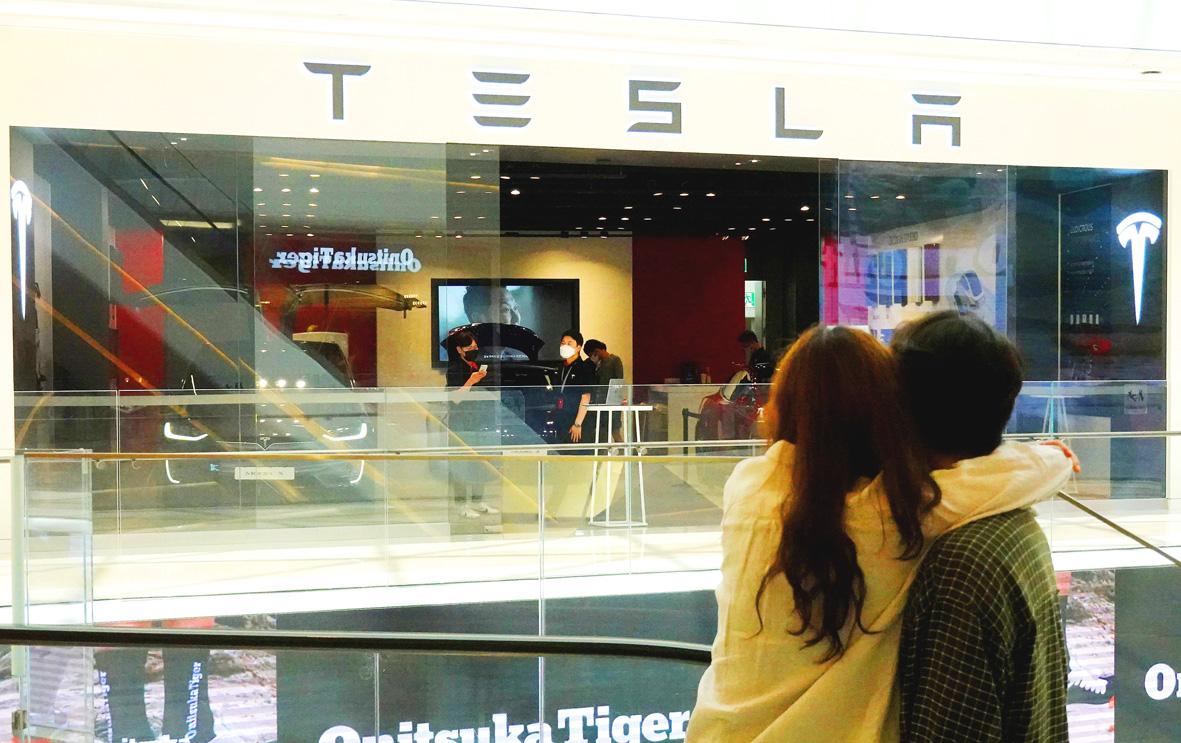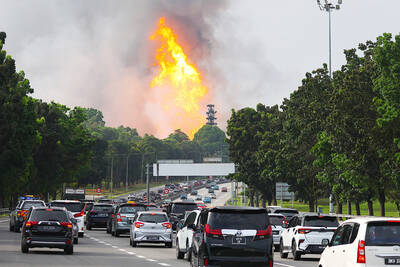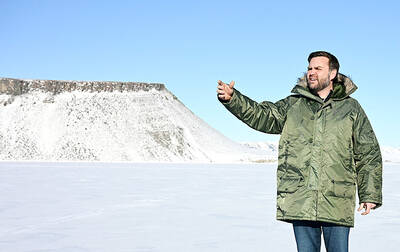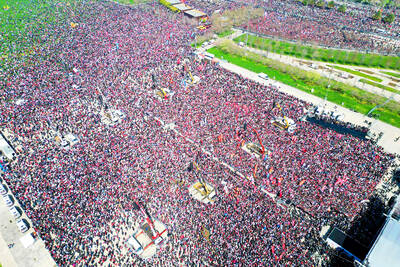From an eponymous cocktail to eager buyers following the shipping routes of long-awaited vehicles, Tesla is having a moment in South Korea, particularly among tech-savvy professionals.
Kang Sung-mo, who runs an advertising production agency in Seoul, is a convert.
“I am not interested in cars, but I am interested in the Tesla brand and its technology,” the 39-year-old said.

Photo: Reuters
Kang bought a Tesla Model 3 in December last year, ditching the Hyundai crossover that he had bought only in the summer.
Being associated with Tesla’s reputation for innovation is good for his image, he said.
The US electric-vehicle maker last month had its best month for South Korea, selling 2,827 vehicles and bouncing back from weak sales in April and May, which were hit by US production disruptions due to COVID-19.
The Model 3 is now the nation’s No. 2 imported vehicle, ahead of the BMW 5 series and the Audi A6, and just behind the Mercedes E-Class.
By contrast, Hyundai, the dominant automaker in South Korea, saw sales of its Kona EV slump 31 percent last month to 2,513 vehicles.
Another 4,000 to 5,000 South Korean customers have the Model 3 on order, although most of them might have to wait until at least September for delivery, a source familiar with the matter said.
The source was not authorized to speak to the media and declined to be identified.
Tesla’s rising popularity among affluent professionals in South Korea, who have been relatively unscathed by the pandemic, is one of many feathers in the company’s cap.
Highlighting the threat it poses to established brands, Tesla last week surpassed Toyota as the world’s most valuable automaker, while its second-quarter deliveries smashed expectations at a time when sales at rivals have been laid low by the pandemic.
South Korea’s generous subsidies of 12.43 million won (US$10,409) for the Model 3 have definitely helped sales, bringing the vehicle’s price down to less than US$40,000, but the Silicon Valley automaker has also generated a genuine buzz.
In social media posts, South Korean Tesla fans avidly track the routes of ships bringing their vehicles to Asia, while at the nation’s bars, the latest trendy cocktail is a mix of HiteJinro’s Terra-brand beer and the Korean traditional liquor soju. Smashed together, their names are pronounced “Tesla” in Korean.
The automaker has additionally benefited from free advertising after popular South Korean actor Yoo Ah-in, known for his sense of style, drove his Tesla Model X SUV to go grocery shopping on a reality show that aired last month.
That has led to a spike in orders for the vehicle, a second person familiar with the matter said, without elaborating.
Some new South Korean owners said that they bought a Tesla for practical reasons.
Kim Dong-hwan, who works in IT in Seoul, wanted to avoid public transportation during the pandemic and driving fatigue on his long commute.
Not everything is perfect — his Model 3 has a panel gap and he has to wait several months before it can be fixed — but Kim said that the benefits and emotional appeal of a technologically advanced brand are worth it.
“I am very satisfied given that Tesla’s self-driving feature has reduced fatigue,” he said.

A fire caused by a burst gas pipe yesterday spread to several homes and sent a fireball soaring into the sky outside Malaysia’s largest city, injuring more than 100 people. The towering inferno near a gas station in Putra Heights outside Kuala Lumpur was visible for kilometers and lasted for several hours. It happened during a public holiday as Muslims, who are the majority in Malaysia, celebrate the second day of Eid al-Fitr. National oil company Petronas said the fire started at one of its gas pipelines at 8:10am and the affected pipeline was later isolated. Disaster management officials said shutting the

US Vice President J.D. Vance on Friday accused Denmark of not having done enough to protect Greenland, when he visited the strategically placed and resource-rich Danish territory coveted by US President Donald Trump. Vance made his comment during a trip to the Pituffik Space Base in northwestern Greenland, a visit viewed by Copenhagen and Nuuk as a provocation. “Our message to Denmark is very simple: You have not done a good job by the people of Greenland,” Vance told a news conference. “You have under-invested in the people of Greenland, and you have under-invested in the security architecture of this

Japan unveiled a plan on Thursday to evacuate around 120,000 residents and tourists from its southern islets near Taiwan within six days in the event of an “emergency”. The plan was put together as “the security situation surrounding our nation grows severe” and with an “emergency” in mind, the government’s crisis management office said. Exactly what that emergency might be was left unspecified in the plan but it envisages the evacuation of around 120,000 people in five Japanese islets close to Taiwan. China claims Taiwan as part of its territory and has stepped up military pressure in recent years, including

UNREST: The authorities in Turkey arrested 13 Turkish journalists in five days, deported a BBC correspondent and on Thursday arrested a reporter from Sweden Waving flags and chanting slogans, many hundreds of thousands of anti-government demonstrators on Saturday rallied in Istanbul, Turkey, in defence of democracy after the arrest of Istanbul Mayor Ekrem Imamoglu which sparked Turkey’s worst street unrest in more than a decade. Under a cloudless blue sky, vast crowds gathered in Maltepe on the Asian side of Turkey’s biggest city on the eve of the Eid al-Fitr celebration which started yesterday, marking the end of Ramadan. Ozgur Ozel, chairman of the main opposition Republican People’s Party (CHP), which organized the rally, said there were 2.2 million people in the crowd, but